One of the most important questions tourists ask when they decide to travel to Iran.
Imagine you’ve got an Iran tour and you are wandering in an old brick bazaar. Then you come across a fancy carpet shop in Iran. You’re amazed by all the different textures and colors of Persian carpet design. You start touching the carpets, feeling the fabrics. One, in particular, catches your eye and you just have to have it. You ask the shop owner for the price. He tells you the price, and you don’t understand it. Because, he’s not using the official Iran currency, Rial, that you know. It’s something else you’ve never heard of before. Anyway, you’re ready to pay. You take out your visa card to pay, but he holds his hand up, saying “cash only”. And that’s when you realize you should have brought more cash with you.
Does this story sound terrifying to you? Don’t worry. Because today, we are here to discuss Iran money, how to pay for everything, and all the other little tips that might come in handy when you’re in Iran.
Iran Currency
Iran – like any other country – has one official currency. But, Iranian people use a different one in their everyday transactions. but using another currency besides that is a common practice amongst Iranians.
Iranian Rial
Iranian currency name is rial. Iranian banknotes all have their values written on them in Iranian rial.
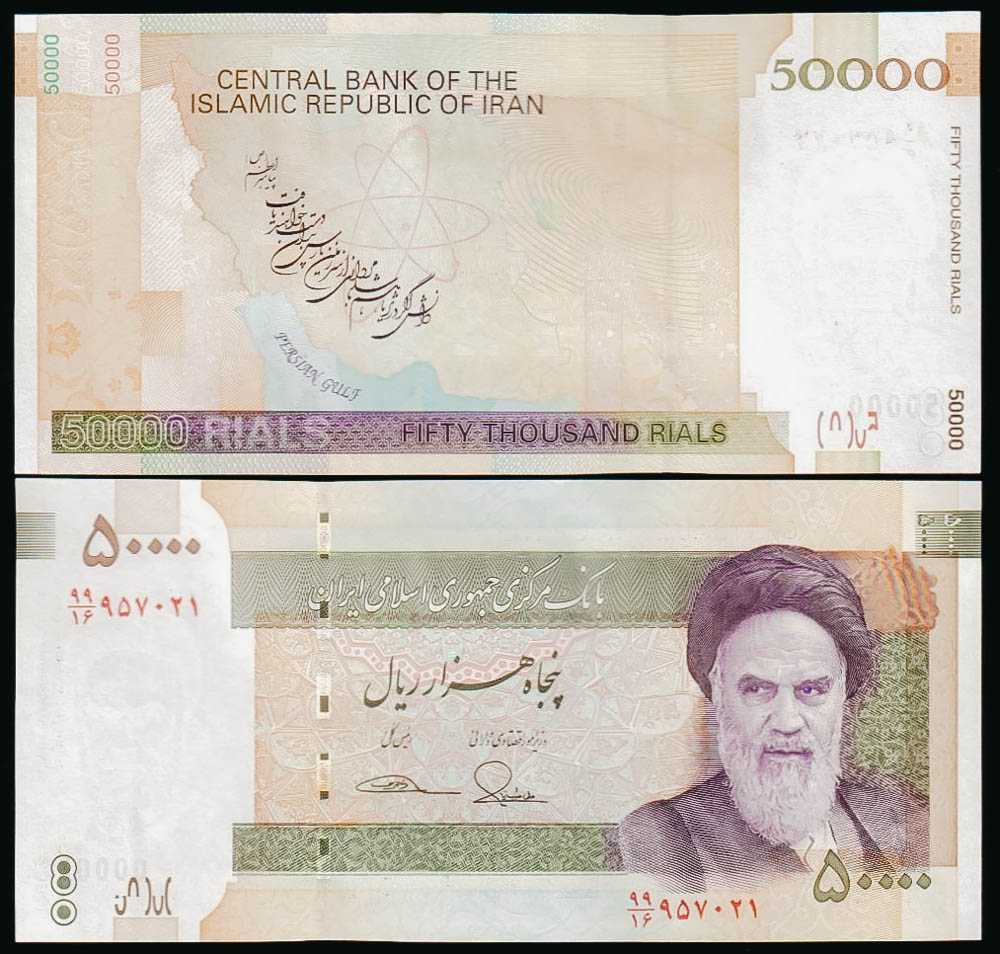
To give you a better sense of how Iran currency works, let’s review some grocery item prices in rial:
Note: Kindly note that at the time of writing this article, the Iran exchange rate in the free market is 1 USD = 250,000, Rial and that is the exchange rate used throughout this article. Due to the fluctuation in Iran currency, there’s no guarantee how long this price will hold. So please, take into consideration that the current exchange rate might be different, so check the latest exchange rate and update the prices for yourself.
| Item | Price in rial |
| 1 bottle of Pepsi coke (1.5 liters) | 900,000 |
| 1 jar of a pickle (590 grams) | 400,000 |
| 1 bar of dark chocolate (335 grams) | 350,000 |
| 1 carton of milk (1 liter) | 100,000 |
As you can see, it’s pretty straight-forward. And because Iranian banknotes have the prices written on them in both Persian and English numerals, there shouldn’t be any problems.
Now, let’s get to other currency people use.

Iranian Toman
Iranian toman is another currency widely used amongst Iranian people. Toman is not an official Iran currency, but it is so ingrained in Iranian culture that even most online stores use toman instead of rial for pricing their products online. Although, official systems like bank and exchange offices all work in rial.
But what is Iranian toman? It is Iranian rial without one zero. There’s nothing more to it.
So, if we were to write the table above for toman, it would be like this:
| Item | Price in toman |
| 1 bottle of Pepsi coke (1.5 liters) | 9,000 |
| 1 jar of a pickle (590 grams) | 40,000 |
| 1 bar of dark chocolate (335 grams) | 35,000 |
| 1 carton of milk (1 liter) | 10,000 |
As you can see, one zero has been omitted.
It’s important to learn to deal with tomans because even though the official Iran currency is rial, almost no one tells you the price of anything in rials. Everybody uses tomans.
There’s one more little thing you should know about Iran currency. Due to the reason that both toman and rial have a lot of zeroes, Persian people have come up with another way of talking about the prices.
People will omit another three zeroes in their conversations and tell you the price like that. For example, if something is 70000 rials, the store clerk won’t tell you it’s 7000 tomans; he’ll tell you it’s 7 tomans. (Or hold up 7 fingers).
So, let’s go through the table above one last time:
| Item | Price in toman (used in conversation) |
| 1 bottle of Pepsi coke (1.5 liters) | 9 |
| 1 jar of a pickle (590 grams) | 40 |
| 1 bar of dark chocolate (335 grams) | 35 |
| 1 carton of milk (1 liter) | 10 |
So if you were to buy that dark chocolate in a store, the store clerk would say something like this: “That would be 35.” Which means 35000 tomans or 350000 rials.
We know that these might seem a little confusing right now, but you’ll get the hang of it in no time. And if after all you ever felt like you don’t know what you’re doing, just ask people to tell you the prices in rials. Also, almost all of the products in an Iranian supermarket have the prices written on them in rial.
To get a better sense of Iran’s currency, let’s take a look at one of the Iranian banknotes.
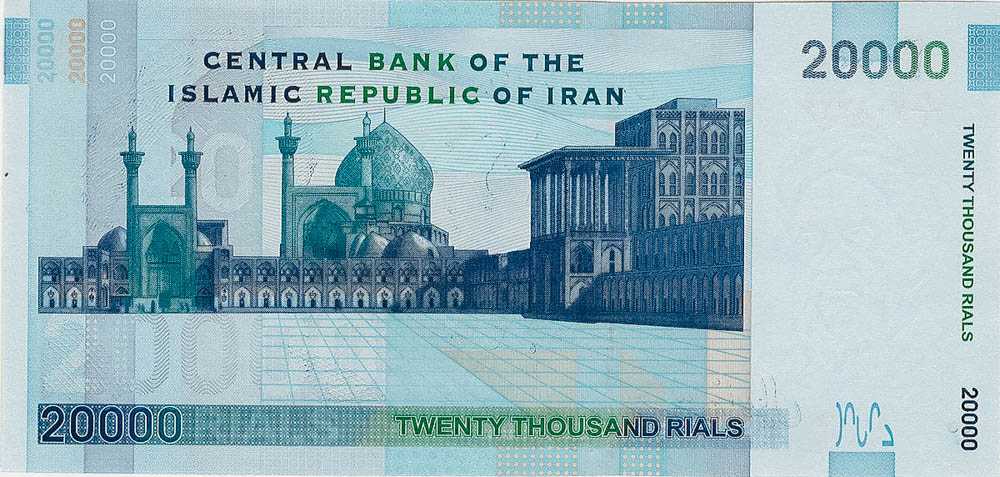
You can see that it’s 20000 rials,

Or 2 tomans!
Visa and MasterCard in Iran
Many people traveling to Iran face a serious problem because of lack of information. They show up with little to no money in Iran. Little do they know that none of the international credit cards work in Iran.
Iran has a lot of ATMs. As a result, most of the people’s transactions are made using debit cards, but because of the sanctions, only cards issued from Iranian banks work in Iran.
What should you do then? You should bring all of the money you think you’re going to need in cash. Cash is king.
We know what you’re thinking about. First of all, maybe you don’t feel like carrying huge wads of cash with you everywhere. And you’re right. It’s not the smartest thing to do as a foreign tourist. Furthermore, how do you know how much cash to bring with you for – let’s say – a 5-day trip? Well, we’ve got the answers to both of these questions.

Mahcard
Mahcard is a kind of debit card designed for tourists who want to visit Iran. You can draw cash from ATMs or make purchases in stores using a Mahcard.
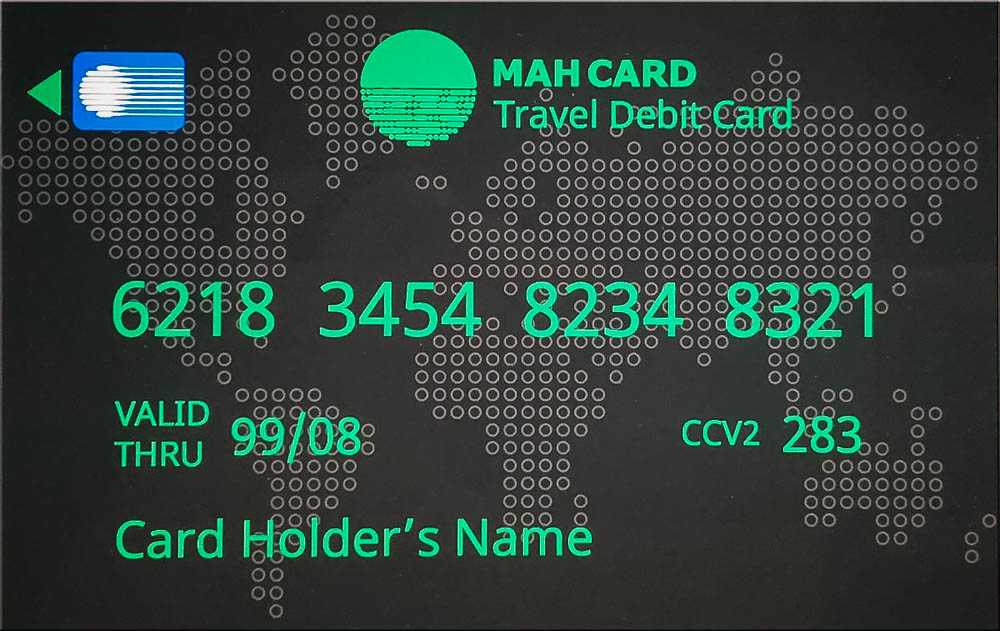
So, basically how it works is that you can request a Mahcard on their website and upon your arrival in Iran, someone will come and take your cash and give you a Mahcard with your cash stored in it.
The best thing is that if by the end of your travel, you haven’t used all the money in your Mahcard, someone will come and give you the rest of your money back.
If you don’t feel like using a Mahcard, you can also get a debit card from any Iranian bank. Just walk into any bank and ask them to open an account for you so you can have a local debit card. Bank staff will help you with the rest. Also, if you’re taking a tour, you can ask the tour operator to help with it.
Maybe you don’t feel like stashing your cash in cards, and you want to carry cash with you. No problem.
Currency Exchange Offices
Currency exchange offices are places in Iran which exchange your money for you; pretty self-explanatory. They’re the best places to exchange money in. Because they have fixed rates and there’s no need for bargaining.
Iran has two exchange rates:
- The first exchange rate is the subsidized rate; or the rate that the government works with. You will see this rate on some websites like com, but it’s the rate that will actually get you considerably less money.
- The second exchange rate is the exchange rate used in exchange offices, which gets you about three times more cash.
For example, at the time of writing this article, 1 USD to Iranian rial is 42,000 rials in the subsidized exchange rate. But the dollar price in Iran is about 250,000rials. Anyway, the fluctuation is too high. So, it’s better to keep updated with the mentioned prices in this article via trustworthy sites, like bonbast.com.
The following are a couple of tips about exchanging money in Iran:
- The exchange rates on the net are not usually correct for Iran. They’re way lower than what you will get for your money’s worth. Again, bonbast.com will help you with the issue.
- You can search for “exchange” on the Google map to find the nearest exchange offices. Also, travel agencies have thorough information regarding this matter. And their information is up to date. Asking them for advice is always a good idea.
- Don’t trust individuals wandering around exchange centers for changing your money. If somebody comes up to you at the Imam Khomeini airport and asks to change your money for you, don’t do it. As a foreigner, you’re most likely to get ripped off.
And that’s all there is to it.
Though you can exchange your money on your arrival at the international Airports or in the banks, their exchange rate is 10-20% less than the exchange office. So, they are not in the priority of suggestion. The best place is the currency exchange shops in the major cities. In the following, we list a number of these shops:
Tehran Money Exchange
The Ferdosi St. in Tehran is the center of money exchange shops. They exchange your currency for the daily announced value which is far more than the government price. Also, there are many shops of this kind all over the city. You can google them based on your residence location.
Pooya exchange: Enqelab Square, North Karegar – 02188968433
Tehran exchange: Sadeghiyeh, Sattarkhan St. – 02144215134
Isfahan Money Exchange
Like Tehran, it is possible to exchange money almost everywhere in Isfahan. But, Sepah St. maybe an easy-to-reach location. It is near Naqshe-Jahan Square that you surely pay a visit there through your itinerary.
Avval Money Exchange: Tohid St. – 03136291010
Shiraz Money Exchange
Besides the airport exchange shop, Zand St. near Shohada Square is also where several exchange shops are located.
Jahanbani Money Exchange: Mollasadra Intersection, Pars Jewelry Market – 07132360291
Yazd Money Exchange
Imam Khomeini St. and near Yazd’s Fire Temple are two money exchange centers.
Amiran Exchange: located in Dad Hotel, Imam Khomeini St.- 03536275615
Tabriz Money Exchange
Tabriz Grand Bazaar is not just a place for buying precious carpets. One of its sub-bazaars, Amir Bazaar, is the center of money exchange in this city. The exchange shops are centered there.
Kashan Money Exchange
Kashan is not that big city. There are numerable exchange shops that most of them are near Kashan old bazaar.
Kerman Money Exchange
Dor Exchange: Emam Jome St. – 0912 093 4454
Sharifi exchange: one of three exchange shops between Tohid Sq and Dr. Shari’ati St. – 0343222 3502
Iran Travel Cost
But, there remains that big question: how much money do you need to bring with you to Iran? Besides tour costs that you can check from our website (and other websites), some things are either not included in tour costs or just happen to pop up when you’re in the country.
Therefore, we have divided these costs into three categories: meals, sightseeing, and souvenirs. Let’s go through them one by one.
Meals
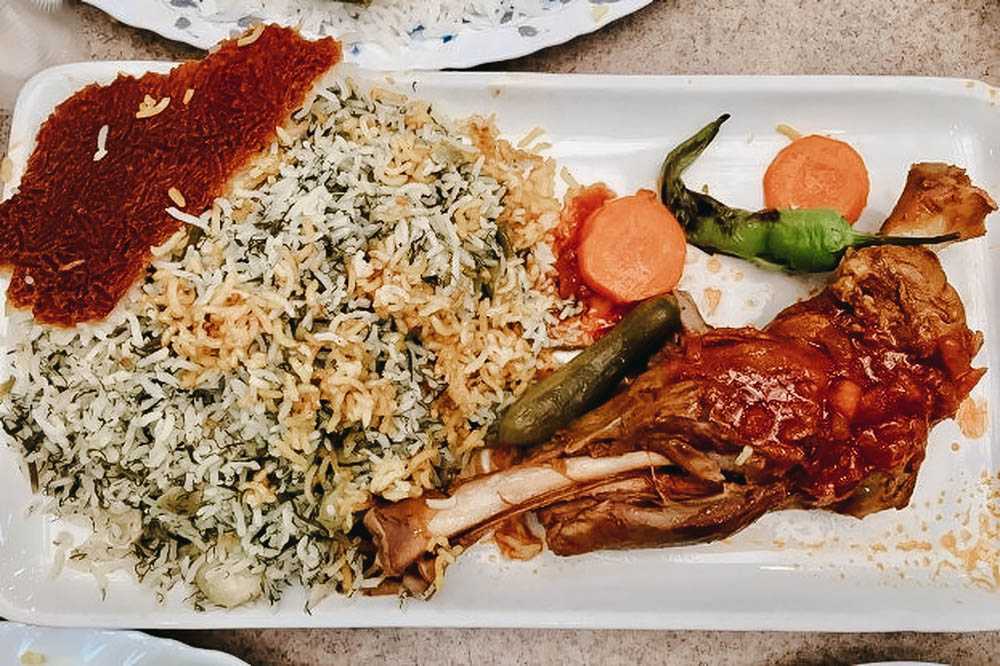
Iran is a country not only famous for its ancient history but also famous for all the tasty and colorful foods it has. Just ask anyone who has visited. They’ll tell you all about it. But how much does the meal part add up to the whole Iran travel cost?
Prices of meals in restaurants can vary from 200,000 to 40,000 tomans (for one person). How much it costs depends on
- The kind of restaurant you’re in. Is it luxurious? Is it located in a wealthy neighborhood?
- The kind of food the restaurant serves. Fastfood restaurants are way cheaper than – let’s say – a traditional restaurant.
You may be thinking about what we mean by “traditional restaurants”. Well, we’re talking about the restaurants which serve Persian foods. Persian food mainly consists of rice with a side dish. The most expensive foods in Iran are those made with red meat; such as Kebab.
We have included some of the dishes with their prices in the table below.
| Dish name | Budget | Regular | Luxury |
| Zereshpolo ba Morgh | 350,000 rials or 1.5 USD | 600,000 rials or 2.5 USD | 900,000 rials or 3.5 USD |
| Ghormeh Sabzi | 250,000 rials or 1 USD | 400,000 rials or 1.5 USD | 700,000 rials or 3 USD |
| Lamb Kebab | 400,000 rials or 1.5 USD | 700,000 rials or 3 USD | 1,200,000 rials or 5 USD |
Tip: when ordering a traditional dish in Iran, take into consideration the fact that they come in huge portions. So for example, if you’re not that hungry and you have a travel mate, you can share one dish and cut back on your costs.
Sightseeing
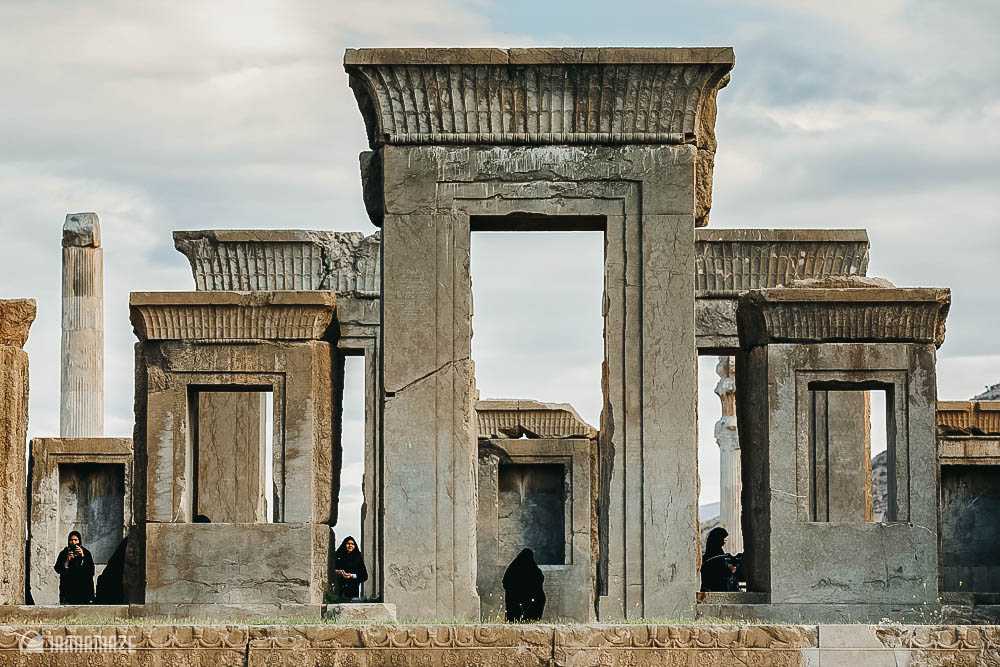
If you’re a history and art lover, be prepared to get dizzy! And not because the tickets are expensive but because there are just a lot of museums, monuments, and ancient structures that you may want to see.
Trip Advisor has an article called “The 10 best museums in Tehran”! and that’s just one city!
Hypothetically, if you visit about 5 monuments each day and the average cost for their entrance fee is 200,000 rials, you would have to pay approximately 1,000,000 rials or 100,000 tomans or about 8 USD for sightseeing everyday.
What should you do then? You can’t possibly visit all the gardens, buildings, and museums in the limited time you have. You can:
- Prepare in advance. Choose which museums and historical sites you are going to visit before you travel. This way, you know how much money you need to work into your Iran travel budget for sightseeing.
- Take a tour. Tour leaders are the best guides. They have been to every one of these places and based on their experience, they know which ones a foreign tourist would enjoy the most.
Iranian Souvenirs’ Costs
There are many souvenirs you can get for your family and friends, but for the sake of this article, we have covered the two most popular souvenirs amongst foreign tourists: Persian carpet and rugs and Iranian sweets.
Carpet and Rugs
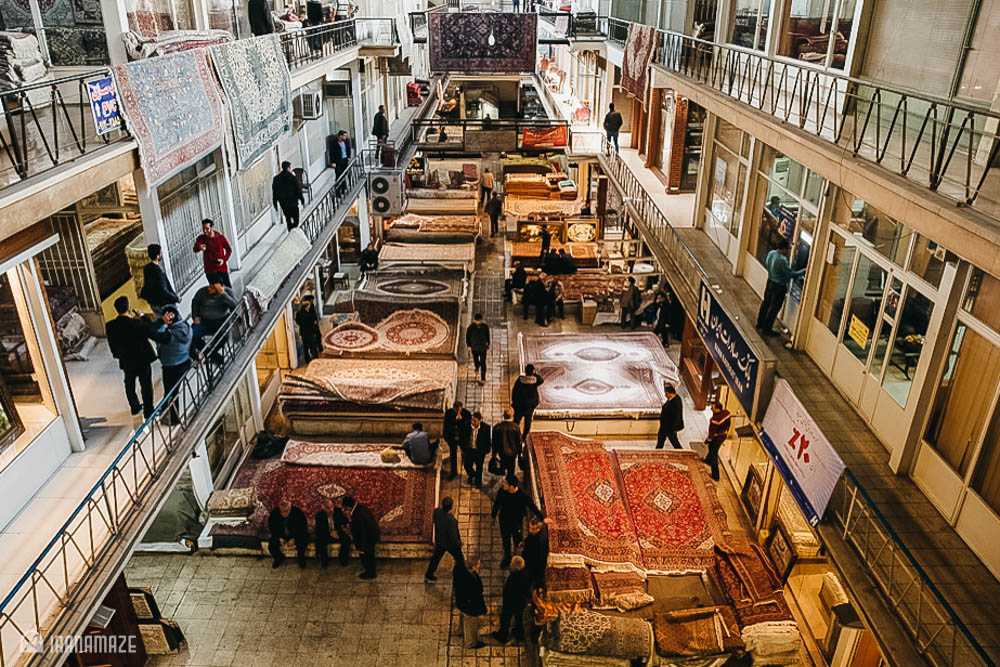
Iran is famous for its Persiancarpets and rugs, amongst other things. One of the things many tourists love to buy as souvenirs is a Persian carpet.
Many factors set the price of Iranian carpets and rugs; such as size, color, style, and origin, whether it’s handmade or not, and a lot of other things. That’s why carpet prices can vary from 1,000 USD to 20000 USD.
Iranian Sweets
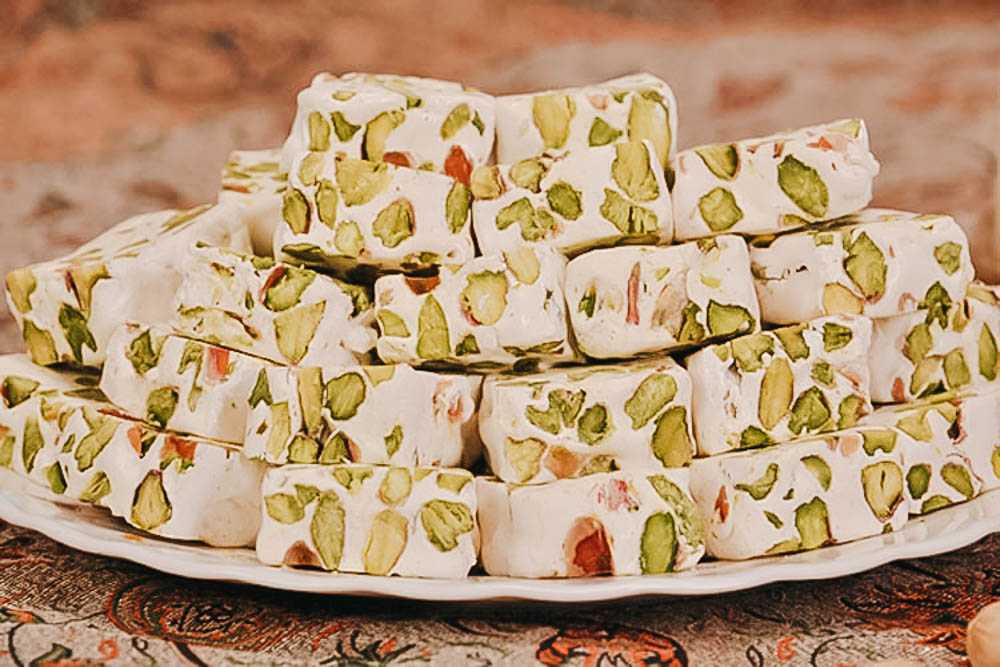
Other popular Iranian souvenirs are Iranian sweets. They are delicious and almost every city has its unique kind of sweet.
Check out the table below for different Iranian sweets you can buy and their prices.
| Products | Price in rial | Price in USD |
| Persian nougat Gazz (400 grams) | 1200,000 | 5 |
| Persian Baklava (980 grams) | 1700,000 | 7 |
| Rock Sugar (20 pieces) | 400,000 | 2 |
Please note that there are so many other sweets that you can buy as souvenirs in Iran. Also, Iran is one of the major dried fruit and nut exporters in the world. Many people come to Iran and see a lot of stuff they might have liked to buy if they had brought more money. Don’t be one of those people! It’s always better to be safe than sorry.
Tipping in Iran
Tipping is not that common in Iran. But people are not offended by it, rather they appreciate it. Of course, if you’re staying at a 4 or 5-star hotel, then you may as well tip the doorman and the hotel porter. Because they will be expecting it.
Also, if you’re couch surfing, bring a little gift or souvenir from your home town for the host or buy some sweets on your way there. It is not mandatory, but it’s an Iranian custom to thank your host with a little something.
Conclusion
Iran’s currency has lost its value due to the sanctions. This means a bad economy for the Iranian people but relatively cheap travel for foreign tourists. Iran is a country of culture, art, and history and is worth every penny you spend on it.
So how much money do you need to bring with you on a 5-day trip to Iran? Assuming you’ve booked a tour and the accommodation, breakfast, and transportation costs are included in the tour cost:
- If you’re a low-budget traveler, 80 USD should be enough.
- If you spend moderately, bring about 140 USD.
- If you’re planning on a luxury trip, prepare to spend more than 250 USD.
If you have any questions or doubts about Iran currency or your travel costs, leave a comment down below. In IranAmaze we’re always happy to help.
Happy traveling!
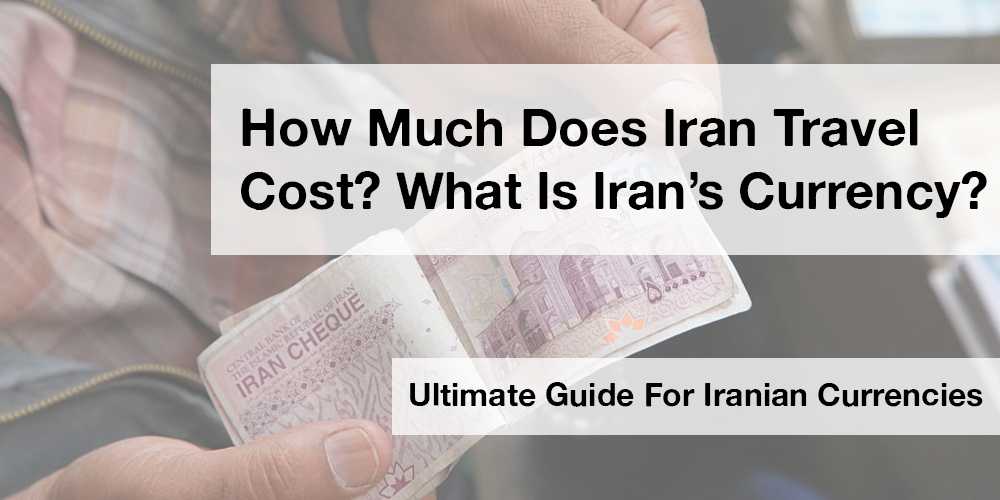
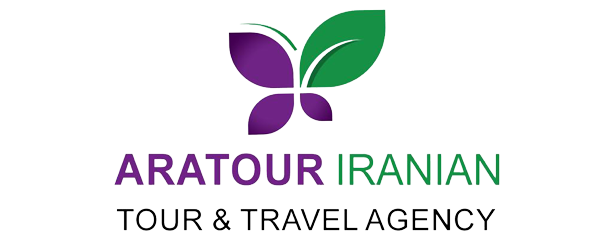
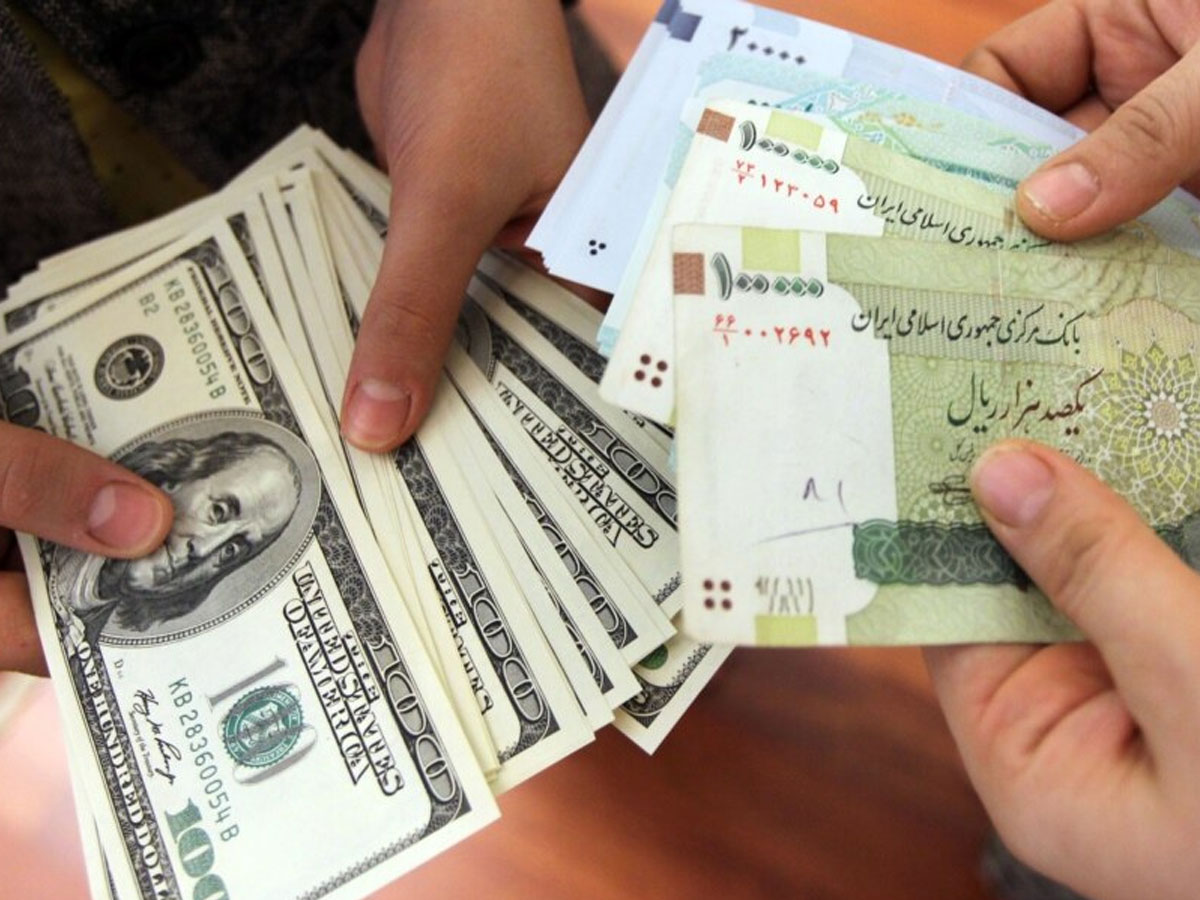
Comment (0)